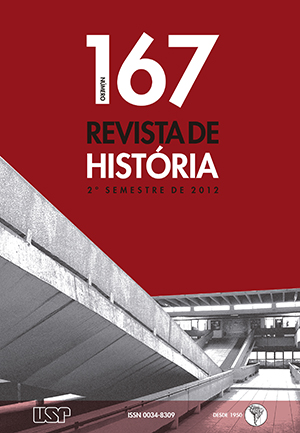Landing on the Beaches: the Functioning of the Brazilian Slave Trade After 1831
DOI:
https://doi.org/10.11606/issn.2316-9141.v0i167p223-260Keywords:
Illegal slave trade – 1831 antislave trade law – slaveships.Abstract
After 1831, the slave trade moved to natural harbors on the littoral, where it employed scores of people catering, healing, guarding the survivors, burying the dead. Smaller boats also helped the slave ships to reach the coast. The local population found new opportunities of employment and trade. Slave dealers had to buy or rent those lands, or associate themselves with their owners. The illegal slave trade would change the local economy and politics.Downloads
Download data is not yet available.
Downloads
Published
2012-12-30
Issue
Section
Articles
License
Autores que publicam nesta revista concordam com os seguintes termos:
- Autores mantém os direitos autorais e concedem à revista o direito de primeira publicação, com o trabalho simultaneamente licenciado sob a https://creativecommons.org/licenses/by/4.0/ (CC BY). Esta licença permite que outros distribuam, remixem, adaptem e criem a partir do seu trabalho, mesmo para fins comerciais, desde que lhe atribuam o devido crédito pela criação original. É a licença mais flexível de todas as licenças disponíveis. É recomendada para maximizar a disseminação e uso dos materiais licenciados.
- Autores têm autorização para assumir contratos adicionais separadamente, para distribuição não-exclusiva da versão do trabalho publicada nesta revista (ex.: publicar em repositório institucional ou como capítulo de livro), com reconhecimento de autoria e publicação inicial nesta revista.
- Autores têm permissão e são estimulados a publicar e distribuir seu trabalho online (ex.: em repositórios institucionais ou na sua página pessoal) a qualquer ponto antes ou durante o processo editorial, já que isso pode gerar alterações produtivas, bem como aumentar o impacto e a citação do trabalho publicado (veja O Efeito do Acesso Livre).
How to Cite
CARVALHO, Marcus J. M. de. Landing on the Beaches: the Functioning of the Brazilian Slave Trade After 1831. Revista de História, São Paulo, n. 167, p. 223–260, 2012. DOI: 10.11606/issn.2316-9141.v0i167p223-260. Disponível em: https://www.journals.usp.br/revhistoria/article/view/49091.. Acesso em: 18 may. 2024.







